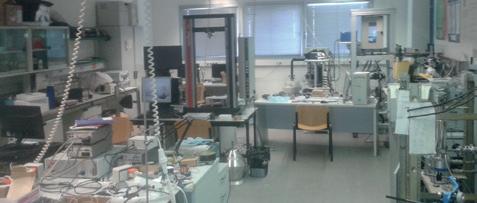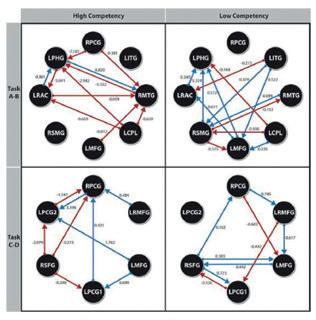6 minute read
Science Of Matter
from Annual Report 2021
by ubics
Next Article
Condensed matter systems exhibiting phase transitions and criticality are probably the very first examples of complex systems. In such situations, the system’s response to external changes is not a simple superposition of the response of its constituents but rather an emerging collective property. Understanding it through the use of techniques from the fields of statistical and nonlinear physics increases its predictability and allows for the design of new and useful tailored materials. Indeed, a broad variety of physical and chemical systems and processes can be described as complex systems, and their degree of complexity demands the adaptation or the extension of currently existing tools to new situations.
An important field of research within the science of complex matter focuses on soft matter materials, which include colloids, polymers and gels, complex fluids, and biological materials. What these systems have in common is that they are easily deformed by external forces and that their behavior is governed by weak interactions at energy scales comparable to thermal energy. While research on soft matter has traditionally been focused on synthetic materials, rapid developments in molecular biology have provided evidence that soft interactions and fluctuation phenomena also play a vital role in biology. Soft materials display complex spatiotemporal responses and special physical properties, including high deformability and complex rheology, which makes them very attractive for technological applications, in particular, in the food and cosmetics industries. Regarding complex materials, it is also worth emphasizing the interest of the research community in developing intelligent materials, i.e. materials that are able to adapt their properties or structure according to specific needs or to environmental changes (in some cases mimicking natural materials and processes), and thus have a huge technological and industrial impact.
Soft Matter
Among the extensive variety of soft matter materials, colloidal systems, i.e. fluid suspensions of micron-sized polymer spheres, are particularly interesting, not only for their ubiquitous nature (colloids are present in creams, foams, smoke, paints, etc..), but also because they provide a rich playground for basic Condensed Matter Physics. Colloidal particles display Brownian motion, size in the visible wavelength and dynamics in experimentally accessible time frames. Yet interactions in colloidal systems can be easily tailored in strength and range via the application of rela-
tively small external fields. These striking features make colloids excellent models for the study of behavior and dynamics in dissipative systems with intrinsic noise, i.e. systems broadly distributed in many physical, chemical and biological disciplines.
UBICS researchers have recently discovered a new scenario for a first-order phase transition that occurs via a complete inversion of the system energy landscape. This phenomenon was termed the “landscape inversion phase transition” (LIPT) and was observed by applying an external magnetic field to an assembly of paramagnetic colloids two dimensionally confined above a stripe patterned magnetic substrate. Another recent breakthrough in the optical manipulation of colloidal microspheres demonstrated the possibility of confining a cluster of particles into a circular assembly, and rotating the outer particle corona via laser tweezing. This colloidal model system was used as a microscopic clutch to investigate the transmission of torque through soft materials at the nanoscale. Another line of UBICS research focuses on understanding how curved colloidal crystalline shells can adapt their shape and resist failure. This is of fundamental importance because these structures are at the forefront of the drive to fabricate new functionalized self-assembled materials. Some biological structures, such as virus capsids, also represent nearly-ideal examples of spherical crystallography. Studies by UBICS researchers highlight the fundamental role played by geometrically necessary crystal defects, such as the pentagons in a soccer ball, in controlling mechanical stability and plastic deformation of these colloidal shells.
Complex flows and complex fluids
Complex fluids are seemingly homogeneous at macroscopic scale, but they are disordered at the microscopic scale and possess structure at intermediate scales. As a result their deformation and flow response to external solicitations is usually very different from that of conventional liquids and solids. Examples of complex fluids include polymeric melts or solutions, glasses, gels and foams. Complex fluids are ubiquitous in industry (e.g. in food and cosmetics) and in living organisms (e.g. blood and mucus).
Researchers at UBICS study hydrodynamic flows in complex scenarios that involve both Newtonian and complex fluids, and either bulk or interfacial instabilities such as vortex ring formation and viscous fingering. Combining experimental work, statistical analysis and theoretical modeling, they also explore the morphological and dynamic properties of twophase displacements in disordered media, in which scale-invariance, non-Gaussian velocity fluctuations, avalanches, and intermittency can be observed. Current lines of research include the study of (i) the origin of instabilities (vortex ring formation and elastic turbulence) in the oscillatory pipe flow of non-Newtonian fluids, and (ii) the basic mechanism behind hysteresis in drainage/imbibition displacements in laboratory models of single pores.


Active Matter
Condensed matter systems composed of self-propelled units operating far from thermodynamic equilibrium belong to the realm of active matter. Such active “particles” possess internal degrees of freedom that allow them to self-propel by extracting energy from their environment and dissipating it to move in a preferred direction. Interaction between these elements originates patterns of self-organization and characteristic flows similar to those found in natural flocking systems. Flocking is very frequent in nature. Indeed, the phenomenon can be observed at a broad range of length scales, from mammal herds and fish schools to bacteria colonies and cellular migrations. These systems give rise to new fundamental questions and the possibility of synthesizing new types of smart materials, for example, those based on assemblies of filamentous proteins and molecular motors. Researchers at UBICS are investigating how biological cells sense and respond to mechanical stimuli, which involves the interplay of several cytoskeletal constituents: primarily filaments, such as actin microfilaments or microtubules, crosslinking proteins, and molecular motors. The transport of various types of cargoes in cells is, for example, based on molecular motors moving along the cytoskeleton. Often, these motors work in teams rather than as isolated molecules. Our studies attempt to understand the effects of elastic coupling on (i) the dynamics of motor complexes (small number of motors), and (ii) the mechanical stability of actin assemblies. Another line of research investigates the propulsion of colloidal systems at the micro/ nanoscale. It has recently been demonstrated that elongated DNA-linked paramagnetic colloids subjected to external precessing fields are capable to propel in a controlled way in viscous fluids. Future investigations will focus on determining interactions among micro-swimmers and the role played by hydrodynamic interactions, and on implementing optical forces to test swimmers’ performance and their constrained motion into microscopic pores or microfluidic networks. As stated before, flocking is a phenomenon by which a general class of self-propelled entities, using limited environmental information and simple rules, organize themselves into an ordered state of motion. In some cases, interactions among moving entities are quite heterogeneous, and this feature has an important impact on collective motion. The presence of heterogeneous social interactions, naturally represented in terms of social networks, has been, for instance, observed in mammals and fish. UBICS researchers are also investigating the effects of such a broad class of interactions among group members, as well as behavioral contagion, on flocking dynamics.
Smart Materials
The design of new useful tailored materials benefits from its fundamental understanding using techniques from statistical and nonlinear physics. In many cases an efficient design implies the control of the amount of disorder as well as the use of multiscale modelling approaches from the nanoscale to large thermodynamic scales.
Our research focuses on the study of functional materials for sensors and actuators, super-elastic materials, shape memory alloys, ferrocaloric materials for efficient refrigeration, as well as the problem of critical failure of materials under compression (up to geophysical scales)

